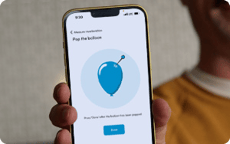December 2, 2020
9 ingredients for HyFlex classrooms that work — now and in the future

Posted by Tricia Whenham on Dec 2, 2020 6:00:00 AM
Flexibility — it’s something that we’ve all had to show a lot of over the past few years. So it’s no surprise that higher ed approaches that let everyone stay nimble are looking more and more appealing, especially when they promise to give students an excellent educational experience whether in the classroom or joining from home or a dorm.
That’s why so many postsecondary institutions are turning to the HyFlex model. In a HyFlex course, every session is delivered online and in person, with students choosing how to attend. Instructors don’t just deliver a synchronous lecture to two groups at once. Student participation and active learning are the cornerstones of HyFlex, and they’re prioritized even though part of the class is there remotely.
HyFlex seems tailor-made for challenging circumstances. But it’s been around for a long time, helping colleges and universities offer flexibility without compromising learning.
Are you creating classrooms on your campus that work well for HyFlex — now and in the years to come? Here are 9 elements that will help set students and faculty up for success.
1. Reliable full-room audio
Unlike some approaches, HyFlex puts a premium on student participation — so it just doesn’t work if students at home can’t hear the students in the classroom.
Be sure to choose an audio system that picks up every voice throughout the learning space. It’s better if you don’t have to keep lapel mics charged and sanitized or pass around shared mics. And it’s ideal if instructors can move around naturally without worrying about dead zones and students can face any direction and still be heard. Here’s how Nureva® audio fits the bill.
2. Video in all the right places
When it comes to HyFlex, training a camera on an instructor’s face isn’t enough. Ideally, you’ll also have a view that shows the rest of the classroom, so students can see each other as they lead discussions or ask questions. A camera that shows a close-up of a whiteboard is also great for zooming in on the details. Plus, you’ll need an easy way to automatically switch between all those cameras.
This can all start to get overly complex. The best approach? Figure out how the space is going to be used and then create the simplest setup that meets the needs of students and faculty.
3. Easy-to-use UC&C platform
COVID-19 brought with it a highly competitive UC&C environment, which means that tech giants are rushing to deliver more and more value. No matter what your institution has standardized on, you’ll have a large toolbox to run your classes.
The biggest challenge might just be helping professors and instructors make the most of what these platforms offer. It’s easy to assume everyone’s an expert — after this many virtual book clubs and meetings, maybe we should be. But many features for the HyFlex classroom aren’t obvious — like the ability to create virtual seating charts in Zoom or integrate polls in the Google Meet™ platform. Make sure faculty get the webinars and training they need to take full advantage of what’s possible. Here are some resources from Microsoft, Zoom and Google.
4. Chat or another backchannel
Backchannels can be a class message board or just the chat feature in your UC&C platform. They give students a place to connect with each other, sharing ideas and reactions, without necessarily having to raise their hands to speak to the professor.
If you enable students who are in the room and remote to use the chat, it’s also a way for them to flag technical difficulties and help each other without interrupting the flow of the class. Just make sure you assign a student to monitor the chat and raise issues and questions so instructors don’t have to divide their focus the whole time. Here are more creative ways to use your backchannels.
5. Tools to visualize ideas
For many professors, the whiteboard is still their go-to for helping students get the full picture. In HyFlex classrooms, you can train a camera on the board and then ensure it’s well lit so remote students can see. But consider whether an online whiteboard could give professors everything they need plus digital perks.
Many online whiteboard options are out there — some of which are free or come with the Google or Microsoft® platform your institution already pays for. No matter where students are sitting in the room or if they’re at home, they can have a crystal clear view of what’s being presented. Plus, a shared online whiteboard can be used by students as well, turning it into an excellent collaboration tool that bridges the distance.
6. Movable seating options
HyFlex is all about flexibility, so don’t get restricted by your furniture. You’ll want seating that can be rearranged to create group collaboration spaces and then rearranged again when it’s time for whole-class instruction.
Once you set up your space, ask for feedback from faculty and students to ensure everyone can see and hear well from their spots. And choose in-room cameras that are easy to adjust plus audio solutions that still work even when a room is reconfigured.
7. Great lighting
Learning spaces with natural lighting do make a difference — they’ve even been shown to positively affect student performance. But in a HyFlex room, this gets a bit more complicated. You’ll want to ensure that the instructor, the students in the class and any physical materials are well lit so that those watching at home aren’t straining their eyes to see what’s going on.
If natural light isn’t an option or is creating glare or annoying shadows on your videoconferencing feed, you may need to take matters into your own hands. Here are some ideas on how adding the right lighting on Zoom calls can increase engagement.
8. Devices and headphones for students
Having students in class and remote can create a gulf that’s hard to bridge. So, it helps to ensure in-person students have the tools they need to connect with those at home. Even in the classroom, students will need laptops or another device so they can access posted class materials and take part in online polls and backchannel conversations.
Breakout rooms in your UC&C platform also help students stay connected. Ensure that all in-person students have headphones with an integrated mic so they can take part in small group discussions and other activities. (If you want to increase student participation, here are more ideas.)
9. All the basic essentials
Got all that? Now you just need to ensure the basics are taken care of. Add extra power outlets for student laptops and throw in charging stations for phones. Ensure the wireless network is fast and reliable. And keep IT support on standby so that a tech issue doesn’t derail an entire class. Ensure that nothing will get in the way of instructors teaching and students learning.
Editor’s note: This post was originally published December 2020 and has been updated.

Posted by
Tricia Whenham
December 2, 2020

















